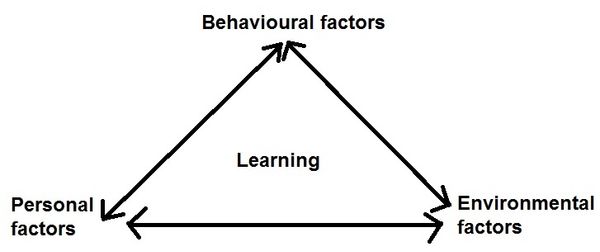By Gaby Dufresne-Cyr, CBT-FLE

In the last Blog, I tried to persuade readers to engage in a healthy discussion about being a dog professional. Today, we will take a look at learning and resilience. Note: to keep this article short, I have included a list of learning theories and the people behind them at the end of this article.
In essence, learning theories are regrouped into six main theories: Behaviourism, Cognitivism, Constructivism, Design-based, Humanism, and Miscellaneous. Out of all the learning theories, most professionals rely on one, behaviourism (classical and operant conditioning). Did you know Albert Bandura, a Canadian, linked behaviourism and cognitivism with his social cognitive theory in the sixties?
Social cognitive theory states "...that all animal action is based on fulfilling the psychological needs of feeling, emotion, and desire”. Social cognitive theory is based on the idea that animals (including people) learn by observing others, and this can only occur when personal, behavioural, and environmental factors are conducive to learning. Dogs can and do learn through social cognitive theory.
Another learning theory comes into play, attachment. Indeed, dogs have pre-set behaviours that allow them to attach to whatever is present during the critical period of social development. After this attachment period, dogs will learn to imitate and solve problems through association and social and emotional connectedness. Dogs who have formed bonds with humans are likelier to follow pointing gestures and visual cues to problem-solve (Virányi et al., 2008). In fact, when all these learning theories are put together, the side effect is increased resilience.
Reinforced Resilience Reduces Reaction.
Resilience is the capacity of a human or animal to recover quickly from difficulties or difficult situations; therefore, animal professionals should reinforce resilience, not behaviour. You might think this sounds strange, yet I assure you this is not an abstract concept. I introduced other learning theories into my practice fifteen years ago, and believe me, they work wonderfully. Many dog research labs now focus on our canine companions' social and cognitive capacities. How does one reinforce resilience, you might ask. The answer lies in your ability to place all the pieces of the puzzle together. In other words, humans must set the stage for other theories to interconnect. The first puzzle is the social cognitive learning theory model, which looks like the image below.

In the social cognitive learning theory model, behavioural factors influence and are influenced by environmental factors; environmental factors influence and are influenced by personal factors (cognition, emotion, and biology); personal factors influence and are influenced by behaviour. All factors must connect and interact with one another for learning to occur (above). When both human and dog models connect through a secure attachment, both individuals can experience learning. Once the human-dog pair functions smoothly, resilience can and will increase. Why? Because the human can plan and set forth the environmental, behavioural, and personal factors required to trigger a response and reinforce recovery. In other words, the human voluntarily works to decrease the dog's recovery time in any given situation by reinforcing the said recovery. As the dog gains insight and receives multiple levels of reinforcement for quick recovery, resilience will increase (below).

The process of placing dogs into social situations in order to trigger personal and behavioural responses is termed situational inducement. Inducement should remain at the dog's threshold, for if the situation is too stressful, the dog will cease to learn. Remember, all three aspects of social cognitive theory must function together to create a favourable learning environment. Furthermore, if situational inducement triggers high-stress responses, the human-dog attachment will suffer and start to deteriorate.
The objective of social cognitive and attachment theory is to let your dog know that you are there and that you will provide positive feedback. Your dog should think you are God, not because you have food, but because your relationship says I got your back. A resilient human and dog team is a powerful combination that can be exposed to any situation and bounce back physically, mentally, and emotionally without any long-term negative effects.
-Cooper, J.J., Ashton, C., Bishop, S., West, R., Mills, D.S. & Young, R.J. (2003). Clever hounds: social cognition in the domestic dog (Canis familiaris). Animal Behaviour Science, United-Kingdom 81 229–244.
-Holt, E.B. and H.C. (1931). Brown, Animal drive and the learning process, an essay toward radical empiricism. New York: H. Holt and Co.
-Frank, H & Frank, M.G. (1982). Applied Animal Ethology. Elsevier Scientific Publishing Company, Amsterdam 507-525.
-McLeod, S. A. (2009). Attachment Theory. Retrieved from http://www.simplypsychology.org/attachment.html
-Virányi, Z., Gácsi. M., Kubinyi, E., Topál, J., Belényi, B., Ujfalussy, D., & Miklósi, A. (2008). Comprehension of human pointing gestures in young human-reared wolves (Canis lupus) and dogs (Canis familiaris). Anim Cogn 11:373–387. DOI 10.1007/s10071-007-0127-y